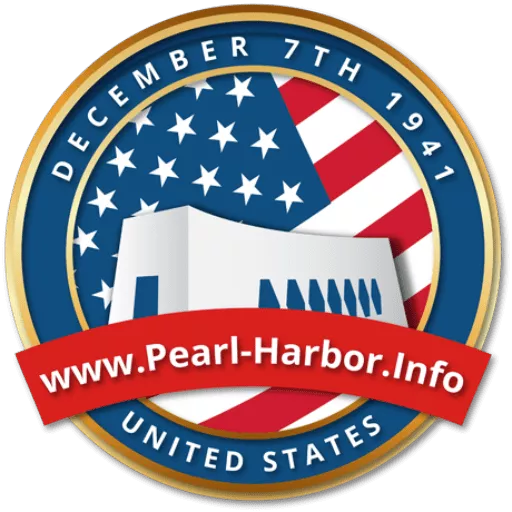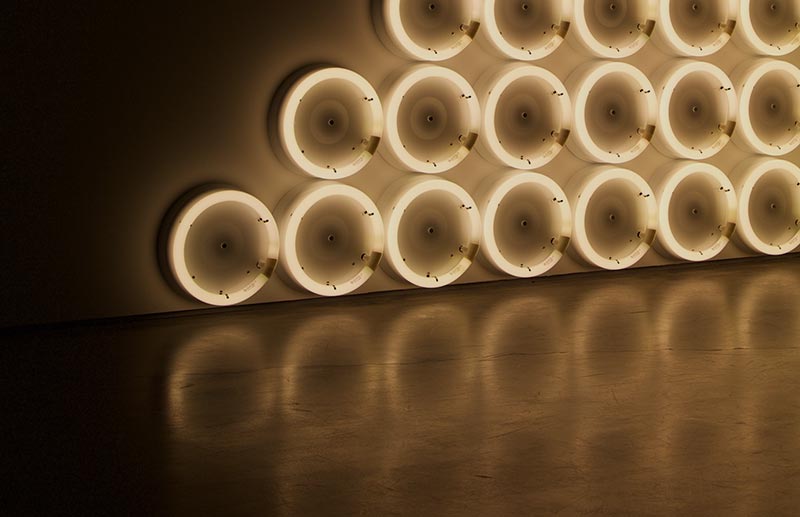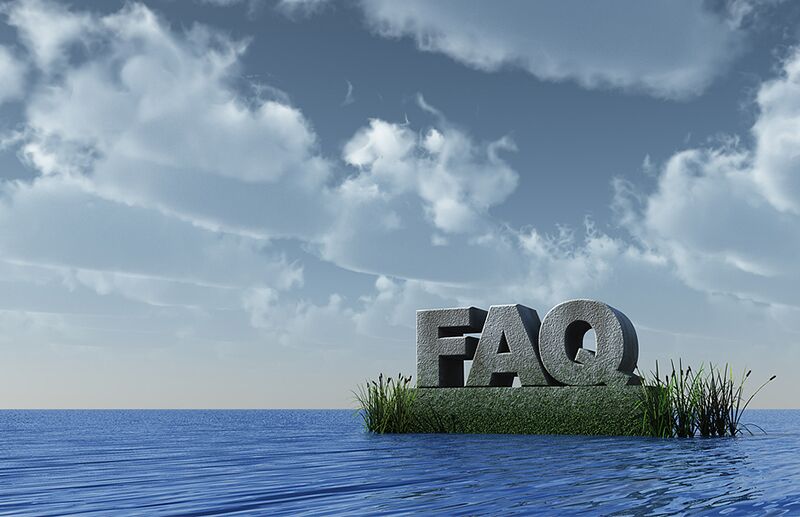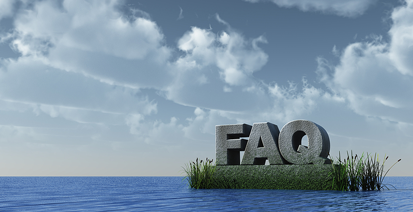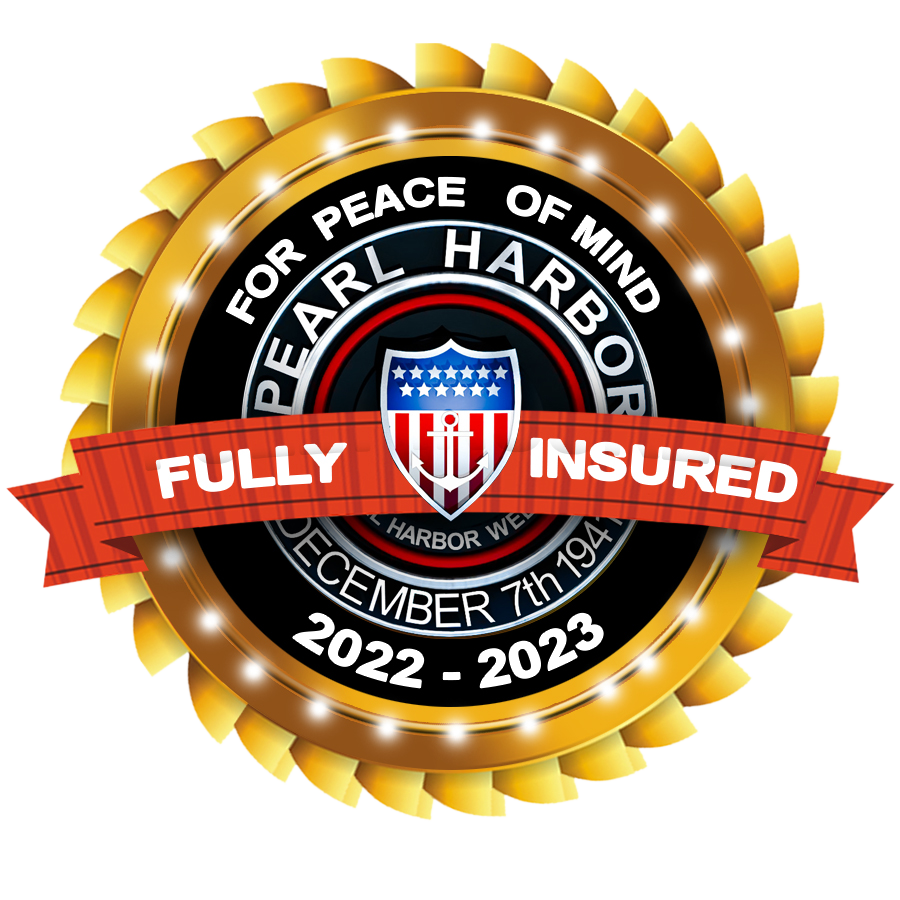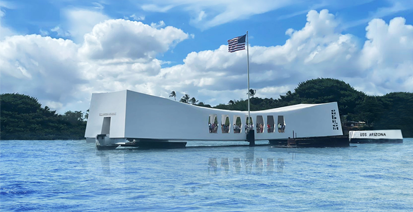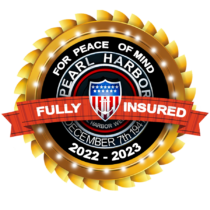USS Missouri Battleship
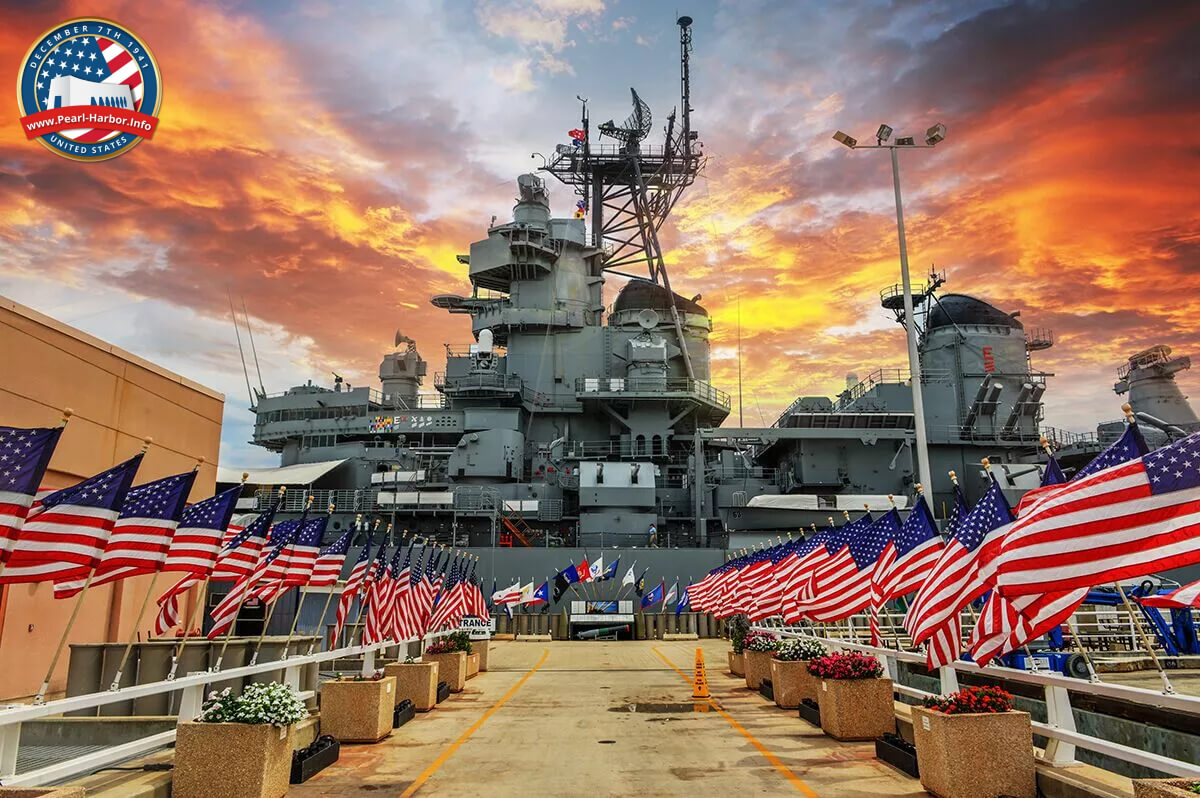
You might have traveled the world and seen many unique and exciting things. But the USS Missouri is like nothing you have ever seen before. Very few will equal the fame of the heroic USS Missouri Battleship. The Battleship Missouri is without a doubt the most famous battleship afloat today. Even those who are not that familiar with battleships have at least seen or heard of the Missouri Battleship. Her long career began near the end of WWII. The US Navy had been steadily closing in on Japan. The Battleship Missouri took part in pounding Japanese-held positions giving cover to the Marines coming ashore. The USS Missouri Battleship was there at Okinawa, The Islands were encircled with a ring of American steel as hundreds of ships of all types were amassed in what would be the final step before an invasion of the Japanese main Islands. The Japanese knew this and, in their desperation, sent thousands of aircraft in suicide attacks against invading Allied fleet. Having learned their lesson from Pearl Harbor and the many battles earlier in the war, US Navy ships were bristling with anti-aircraft guns. Together with the most advanced radars of the day, new more lethal shells, and clouds of fighters, American fleets utterly shredded the vaunted Kamikaze attacks. However, some got through and they were enough to wreak carnage on American ships. Hundreds were hit and dozens were sunk. The “Mighty MO” was hit by one of these Kamikaze attacks. The Japanese plane came in low in the hope to evade the barrage of anti-aircraft fire. fortune favored him and he managed to smash into the Battleship Missouri. However, unlike the aircraft carriers with their wooden decks and the small unarmored landing ships and escort ships, the “Mighty MO’s” thick armor meant to handle the heaviest shells that the Japanese could throw at her stood fast. The Japanese plane struck her side and fell into the sea barely leaving a dent. Luckily, no one on the battleship was injured in the crash, the only fatality being the Japanese pilot. After Okinawa had fallen, the Navy began bombing and shelling the Japanese Main Islands in preparation for the inevitable, invasion of Japan. The outlook was grim. The casualties on and around Okinawa were heavy. Everyone knew that in an attempt to invade Japan, casualties would be astronomical. But then, in almost an instant, the war was over. The Soviet Union declared war on Japan and the United States deployed two new super weapons, the atomic bombs destroying two cities in an instant. The Japanese Emperor knew that there was no choice but to surrender. The “Mighty MO” sailed into Tokyo Bay along with a vast armada of Allied ships. The orders were given and the “Mighty MO” was to be the place where the Japanese would formally surrender. The dignitaries from all of the Allied powers gathered and met with the Japanese representatives. With the stroke of a pen, the largest conflict in human history came to an end. If you visit the Missouri battleship today, you can see where the Kamikaze crashed into her side, and see the very spot where the war came to an end and the document that was signed.
USS Arizona Memorial
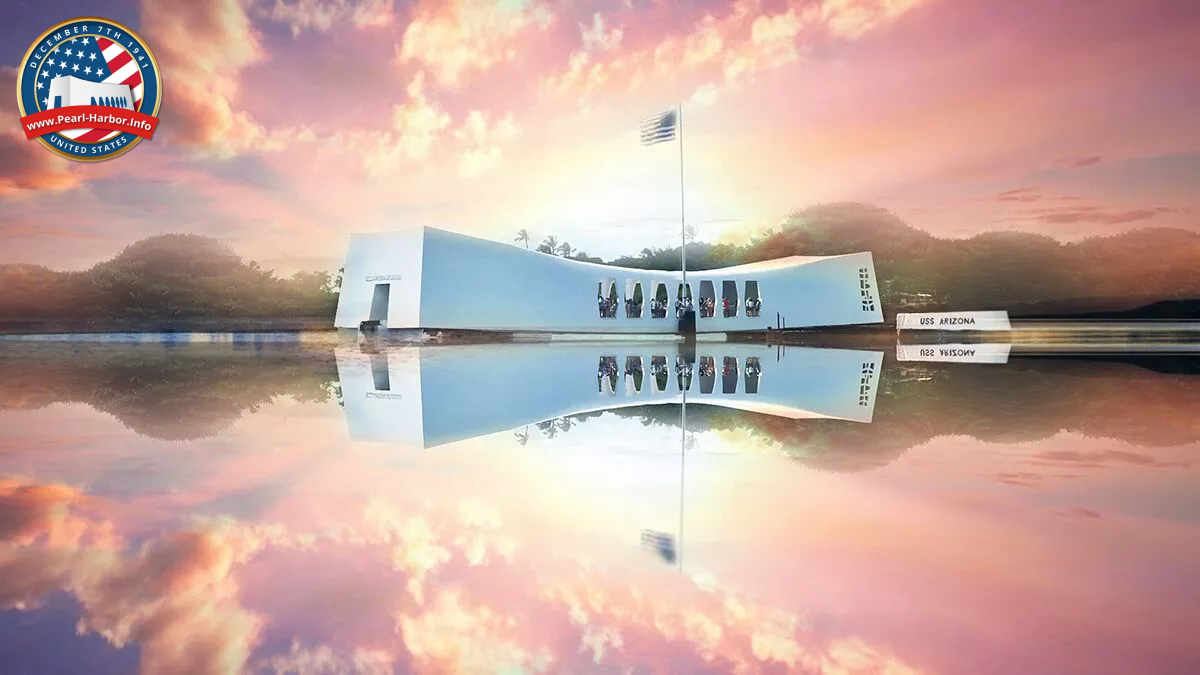
While you are in Hawaii, out seeing things strange and wonderful. Unique things that you have never seen before. But there is one thing in the world that you absolutely must see. The Arizona Memorial is the most visited attraction in Hawaii, and the most important. The USS Arizona Memorial serves as a monument to those who died during the Japanese attack, but also as a reminder of those who fought on and carried America to ultimate victory. The Arizona Memorial is a sacred place and no trip is truly complete until you pay tribute to those who made the ultimate sacrifice on that quiet Sunday morning in December. When you visit the Arizona Memorial you will see and learn many things. You will be given knowledge not just about what happened during the attack on Pearl Harbor but also about how the Japanese attacked and why they attacked. As you take the boat ride out to the Memorial, you can sit back and think about what it was like on that day. One of the first things you may notice is the smell. There is the scent of oil that hangs in the air around the Arizona Memorial. This is the fuel that slowly rises to the surface, which some people call the “Black tears of the Arizona“. As you enter the Memorial, suddenly everything becomes quiet. Even with everyone else there, the atmosphere changes. The USS Arizona Memorial Monument is a place of reflection, a place to think. As you head down the Memorial you look into the water below. The sunken USS Arizona sleeps there not having moved an inch from that day in 1941. You think about what it would be like to be there to bear witness to the attack. You continue onward to the shrine room. There you see etched in marble, the names of everyone who died aboard the Battleship Arizona. It is one thing to read a number on paper, but it is another thing entirely to be able to stand there and read the names. Then you see another list, a far smaller list. These are the names of those who lived on. Who after a full life, chose to return here one last time in order to join their comrades who never left. As you leave the shrine room on the way back to the entrance, take some time to think, and decompress. Once you are back on dry land, you will understand why the Arizona Memorial Monument is the most important place to go in Hawaii.
USS Bowfin Submarine
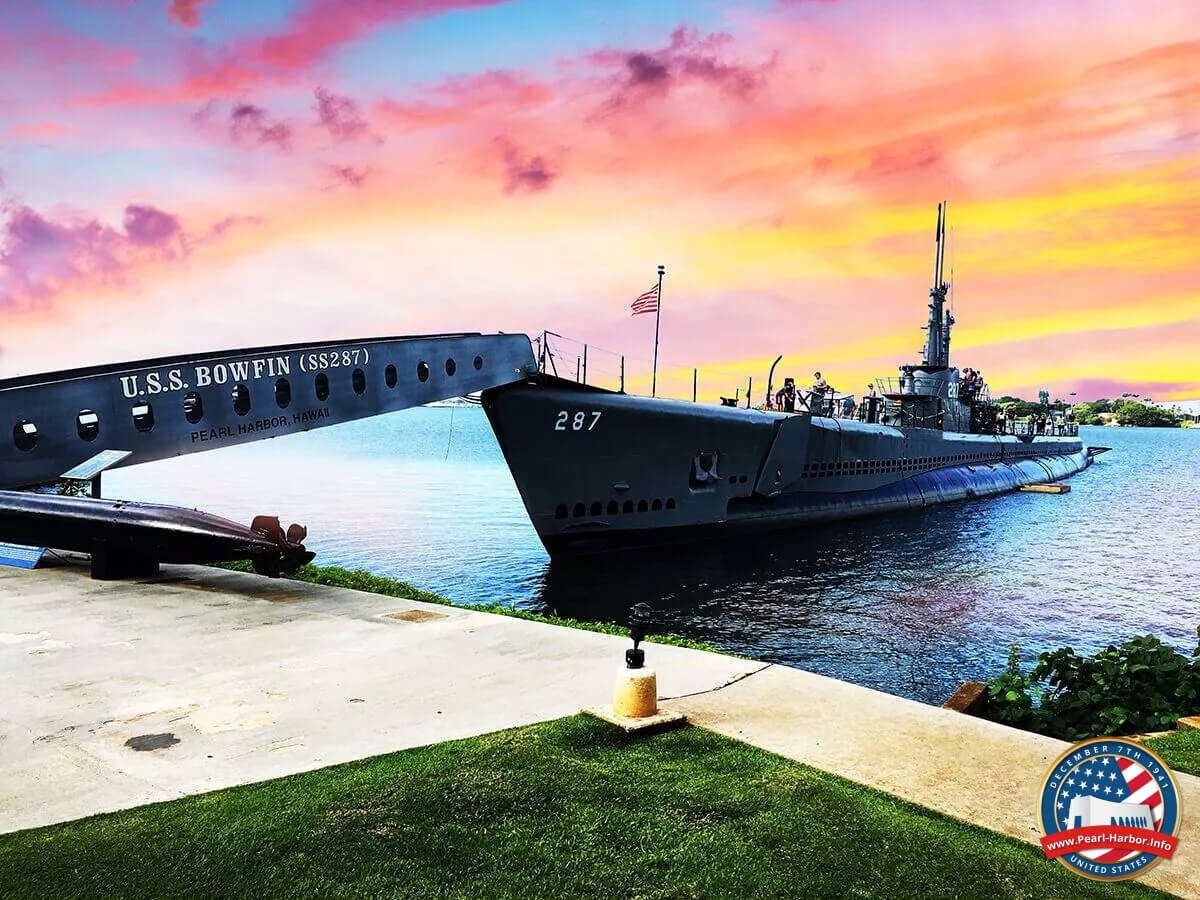
While at Pearl Harbor and Pearl Harbor Visitors Center there are lots of things to see. Solemn Memorials, giant battleships, and sleek airplanes. But there is one thing that was more important than all of that. One of the most successful submarines of WWII. The USS Bowfin submarine, or the “Pearl Harbor Avenger.” You could argue that submarines like the USS Bowfin were some of the most important ships involved in the war against Japan. While battleships and aircraft carriers took all of the spotlights, the submarines quietly fought their lonely war against Japan. They were one of the smallest forces, with defective weapons, and they suffered the heaviest casualties, but just like movie heroes, they fought against the odds and won. US Navy submarines sank half of all Japanese merchant shipping and one-third of the entire Japanese Navy. Including sinking the largest warship ever sunk by a submarine, the Japanese aircraft carrier Shinano. The Bowfin submarine played her part in the war responsible for sinking 44 enemy vessels. Head below decks and see the claustrophobic conditions that sailors had to live in for weeks at a time as they went out on war patrols deep into enemy territory. Sometimes almost literally in their backyards. Then think about the fact that they did not do it just once, but NINE times! If the cramped conditions get to you, do the one thing that submariners at sea could not, step outside and take a walk in Bowfin Park. See the displays of torpedoes, missiles, and guns. Check out the truly unique display, the Kaiten or Japanese suicide torpedo. An early form of guided weapon launched from the shore, a ship, or a submarine the human pilot would steer it into an enemy ship. The Pacific Fleet Submarine Museum is also a must-see. There you will learn everything about US Navy submarines in WWII, and beyond. Have a look at the only cutaway of a Poseidon ballistic missile on display a truly unique sight. Admire the colorful collection of submarine battle flags on display adorned with their awards and victory marks. Once you are done at the museum, one thing that you should truly see is the Submarine Memorial. This memorial pays tribute to every submarine lost in WWII, complete with the names of the crew members who are still on eternal patrol. This memorial serves as a reminder that the success of the US Navy submarines also came at a great cost.
Tree Of Life

As you walk around Pearl Harbor, you will see the most unique-looking giant white sculpture by the museums. You might wonder what it is and what it means. This is the Tree of Life. The Tree of Life was designed by Alfred Preis, the same man who designed the Arizona Memorial. In fact, the Tree of Life can also be found on the USS Arizona Memorial by the shrine room. Alfred describes the design as something to make you think and reflect on things. Especially as the sun shines through it onto the Arizona Memorial. It makes you think about things especially as you look upon the marble wall engraved with the names of those who died aboard the USS Arizona Battleship. Alfred Preis had an eventful and tragic life. He was Catholic but was from a Jewish family. When Austria was taken by the Nazis he and his wife fled to America. Unfortunately, his family was not as fortunate and they perished in the Holocaust. He made his way to Hawaii where he settled in until Pearl Harbor. As an Austrian, he was considered an enemy alien and was sent to a detention center on Sand Island in Honolulu Harbor. He stayed there for a few months. Even though he was imprisoned by his new country, he was not bitter about it, and even got a job with the Territorial Government. He then started his own architecture firm where he was approached to design the Arizona Memorial Monument and the Tree of Life. So, while you are at Pearl Harbor, take a picture next to the Tree of Life and maybe sit a while and contemplate the design and just have a moment to think about the things you got to see at Pearl Harbor. Perhaps even think about the story of the designer of the Arizona Memorial and how WWII affected so many people all over the world.
USS Oklahoma Memorial

Pearl Harbor is always busy, filled with things to see and new stories to hear and learn. The USS Arizona Memorial is truly the main attraction and with good reason. She represents the greatest loss of life at Pearl Harbor on December 7, 1941. Her wreck is still present and stands as a physical manifestation of the past for everyone to see. But the USS Arizona Battleship’s story is not the only one. The Oklahoma Memorial represents a triumph of engineering and strenuous work. This story begins with tragedy. The USS Oklahoma was tied up on Battleship Row on December 7, 1941, when the Japanese attacked. The USS Oklahoma Battleship was hit by multiple torpedoes. Torpedoes that naval intelligence thought could not operate in the shallow waters of Pearl Harbor. That when dropped, they would plunge straight into the bottom of the harbor. They could not have been more wrong. The Japanese had known about this and modified their torpedoes with wooden fins so that they would enter the water at a shallower angle. These are the torpedoes that slammed into the hapless Battleship Oklahoma. The sudden flooding on one side of the ship caused her to begin rolling over. Slowly at first, then faster and faster until she had rolled completely over. The crew on the upper decks were the lucky ones, they could abandon the ship quickly jumping in the water to rescue. Unfortunately, hundreds of sailors were caught below decks. Trapped in a giant metal tomb that was slowly filling with water. The rescuers were close, but any rescue was far away. with the ship upside down, the only way to get to the men trapped in the ship was to cut into the bottom of the ship. This would be a long and painstaking process under normal conditions. But December 7 was far from normal. There was the threat of being attacked, the fires still burning in the harbor, and chaos all around. On top of all of that, the rescuers were racing against time. Water was leaking into the Battleship USS Oklahoma and any pockets of air still in the ship would become unbreathable all too soon. Despite the frantic rescue attempt, a scant few were rescued. Hundreds perished in the second-largest loss of life during the attack on Pearl Harbor. After the attack, salvage began. Priority was given to the ships that could be rapidly returned to service. However, plans were made to salvage the USS Oklahoma. When the time came, massive cranes were set up on Ford Island to pull the stricken battleship upright. They managed to right the Battleship Oklahoma, patch the holes in her hull, and recover the remains of those who were still trapped deep within the ship. By this time, the war was going in the Allies’ favor. More and newer ships were pouring out of America’s shipyards every day. The decision was made not to repair the Battleship USS Oklahoma. She was sold for scrapping and was to be towed back to the mainland. While being towed, a storm brewed up and the Battleship Oklahoma developed a leak. The tug cut the lines and the USS Oklahoma slipped beneath the waves. While the USS Oklahoma Battleship is gone, a monument stands on Ford Island near the USS Missouri. This monument honors the memory of those who lost their lives aboard the USS Oklahoma. Be sure to stop by this memorial and help keep their memory alive.
Fleet Admiral Chester W. Nimitz

When you look at the history of the United States, you will hear about a thousand generals and admirals. But when you find out whose name history remembers clearly, there is only one name, that shines, and history reflects him as the greatest United States military commander in the history of the United States. Chester William Nimitz, commander of the United States Pacific Fleet during the second world war, and a man whose name history remembers. He led the United States and our allies to one of the most significant victories in the history of humankind. He started out in the Asiatic squadron in the early 1900s. Slowly working his way up through the ranks, he commanded every kind of ship from destroyers to battleships. By the time the US entered WWII, he was a Rear Admiral. He was sent to replace the commander of the Pacific Fleet Admiral Husband Kimmel. Admiral Nimitz all at once had to take stock, reorganize and start fighting the war against Japan. He had one major rival in this war. General Douglas McArthur, having evacuated from the Philippines in the wake of the Japanese invasion had his own view on how the war was to be fought. But first, Japan’s expansion had to be stopped before anyone would be taking the war to them. Admiral Nimitz chose to make a gamble and listen to one of the codebreakers in Hawaii. The Japanese were headed for Midway. Here he would set a trap for them. The battle of Midway ended up being a spectacular victory for the United States. The boost in morale and the crippling of the Japanese carrier fleet paved the way for the US to go on the offense. Admiral Nimitz favored a strategy called Island hopping. The US military would take strategic Islands in the Pacific bypassing the strongly defended Japanese Islands to let them ”wither on the vine.” Eventually getting into range to strike Japan itself. General McArthur, embarrassed over losing the Philippines and mindful of his promise that he would return, favored retaking New Guinea, the Philippines, and Formosa in order to get within striking range of Japan. While the Navy rejected McArthur’s plan in favor of Nimitz’s plan, President Roosevelt decided to split it between the two and basically ordered two separate drives toward Japan. McArthur would go along the south Pacific and Nimitz would go through the West Pacific. They both were able to draw upon the industrial might of a fully mobilized America. In the end, they met in the Philippines and from there onward toward Japan. At his height, Admiral Nimitz would be promoted to Fleet Admiral, a rank very few ever reached. At his height, he commanded the greatest and most powerful fleet in human history.
Pearl Harbor Aviation Museum

America is the birthplace of airplanes. You have even flown in one to get here. But one thing about planes that you absolutely must see is the only air museum that is also an aerial battlefield. The Pearl Harbor Aviation Museum is not just a building full of exhibits, it IS the exhibit! As you walk the grounds of the museum, you walk upon the very ground that shook as it was blasted by Japanese bombs. You will see for yourself the scars left on the hangars by the Japanese all those years ago. You will look at the brightly colored control tower still standing proud as it did during the attack all the way back in 1941. Looking up into the clear Hawaiian sky, you can almost imagine what it would be like to hear the roar of engines overhead as Japanese planes streak through the sky. When in the museum, you will learn the pivotal role that aviation played in WWII and learn about the role that Hawaii played in WWII and the realization by the United States that airpower would be the key to ultimate victory. The Pearl Harbor Aviation Museum also has a large collection of aircraft. The most unique thing that no other Aviation Museum can claim is to have the pieces of a plane that was involved in the attack on the actual museum. See the pieces of a Japanese Zero that actually took part in the attack, the famous “Niihau Zero”. See the remains of a Japanese torpedo bomber, one of two on display in the entire world. See the plane the former President George H.W. Bush trained on as he became one of the youngest pilots in the US Navy. Old enemies share the space as you see the fully restored F4F-3 Wildcat and its nemesis the A6M2 Zeke. If jets are more your speed, the Pearl Harbor Aviation Museum has you covered. See an F-86 Saber like the ones that blasted down “Mig Alley”, have a look at the F-4 Phantom II like the ones that thundered through the skies of Vietnam, or marvel at the sleek form of the mighty F-15 Eagle undefeated in aerial combat. The Pearl Harbor Aviation Museum is truly a unique place to visit and a treat for the aviation enthusiast.
Unconditional Surrender
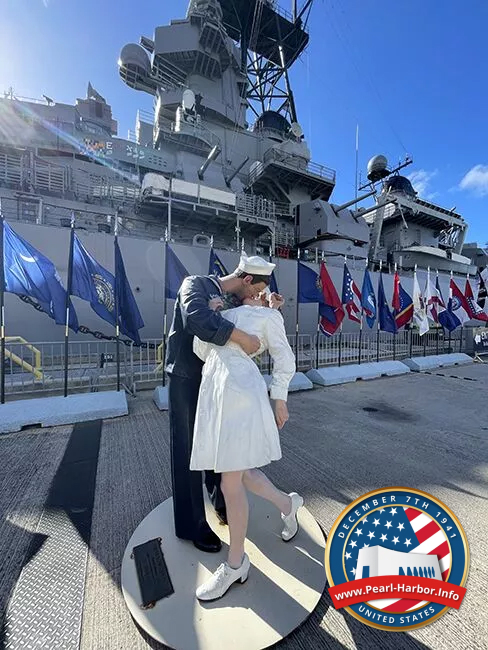
As you walk by the USS Missouri, you will see a familiar sight. It is unmistakable, one of the most recognized pictures of WWII. Nothing shows the elation of V-J Day more than the image of a sailor kissing a woman in Times Square. But the well-known image is a picture, not a sculpture. The story of this sculpture is just as unique and interesting as the photo. The first sculpture titled “Unconditional Surrender” was first put on display temporarily in Florida. The sculptor also calls this statue “Embrace Peace” as a play on words. The sculptor Seward Johnson made it in a unique way. He used a computer program to take a two-dimensional image and translate it into a three-dimensional image. This is then used to make a mold to cast the statues in either aluminum or bronze. There are multiple statues all over the US. There is also one on display in Normandy, France. The statue is appropriate being next to the USS Missouri since it depicts people celebrating the end of the war near the ship where the war ended. One thing that many do not know is the fact that there are actually two pictures. The most famous one was published on the cover of Life Magazine. A less well-known one that was in the public domain was the actual subject of the statue. While the statue has had its share of controversy, one over potential copyright violations and the other having to do with the fact that it is believed that the two people depicted in the photographs did not know each other and that the kiss was non-consensual. However, one thing is clear. This statue presents the most iconic image we have of the end of the war. It conveys the joy and relief that everyone felt due to the war ending.
President Harry S. Truman
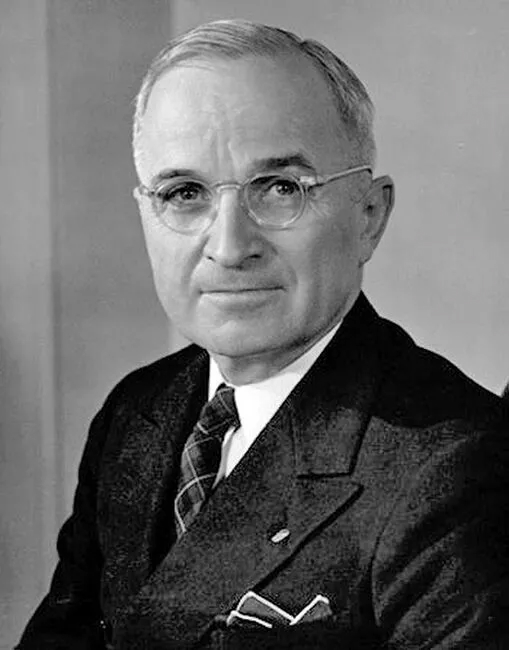
Imagine the toughest decision that you ever had to make. How long did it take you? From time to time, whether at work or in our personal lives, we all have to make some tough calls. President Harry S. Truman had to make a really tough call. The effects of which are still with us today. Imagine it, you are the newly sworn-in President of the United States. Your country has been at war since December of 1941. The man who had led this country for twelve years has suddenly died. You are now in charge. Nazi Germany is in its death throes, the Allies are circling in on the dying Reich. The war against Japan is going well, and the invasion of Okinawa is underway. But casualties are heavy. These are the things that Harry S. Truman faced when he was sworn in as the new President of the United States. By May, Germany would be defeated and Victory in Europe Day was declared. All eyes now focused on the war with Japan. By this time, the hard battle for Okinawa has just begun. American bombers were hammering Japanese cities. American submarines had made a ring of steel around Japan. Not even their ports and harbors were truly safe. On the flip side, the Japanese commanders had begun to realize that any form of victory was impossible. For some, their only hope was to bleed the Allies just enough to get a negotiated peace. For others, they would let Japan burn as long as they could take as many Americans with them as possible. The Allies for their part understood that unless something happened, they would have to go ahead with an invasion of the Japanese home Islands. The opposition that they faced taking Iwo Jima and Okinawa was extremely strong and combined with the kamikaze attacks, the victories came at a high price. President Truman’s military advisers were telling him that based on the casualty rates seen in Okinawa, they were expecting more than one million dead for the Allied forces and several million dead for the Japanese. On top of this, with the war in Europe brought to its bloody conclusion, the American people were beginning to get war-weary and the economy both bolstered and strangled by war was beginning slow down. President Truman had been briefed about this new weapon that they were developing in the New Mexico desert. A weapon powerful enough to wipe a city off the map. Powerful enough that it might just convince the Japanese to surrender. So, he chose. He decided to unleash the most terrible weapon yet devised by man upon Japan. Ending a long war, and sparing countless lives. But in doing so, opened the gates to our potential annihilation. Was he correct?
Pearl Harbor Survivors
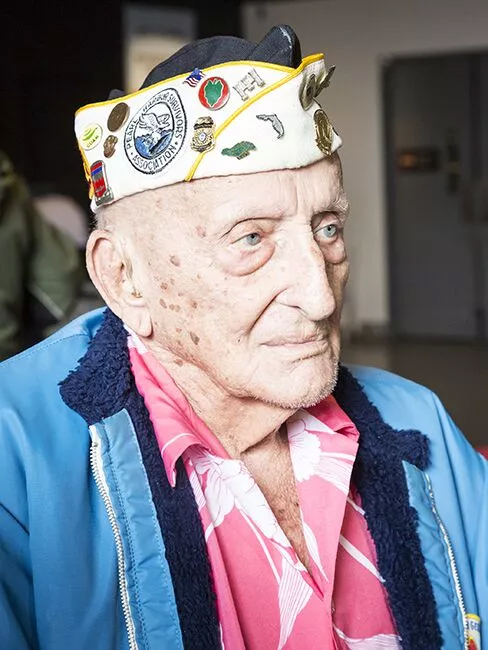
People agree there is always something new to see or learn while at Pearl Harbor. There is always something new to learn about the greatest conflict in human history. While walking around the Pearl Harbor Visitor Center, you may notice some WWII veterans sitting around and wearing their garrison caps festooned with decorations from their time in the military. They are a rare subset of a dwindling group. They are not just WWII veterans; they are survivors of the attack on Pearl Harbor. Not only did they survive the attack that brought America into the war, but they also survived the war from start to finish. They are a humble lot, always willing to tell their stories about Pearl Harbor and what they doing on that day. Though some of their memories are painful, time and a need to be heard, to preserve their experiences for future generations to learn from has taken some of the edge off of the pain. Of course, as with all veterans that have been to war, there are some things that they will never tell anyone except for those who have been there, and who understand the wild mix of emotions and memories. We call them the “Greatest Generation.” Those who grew up in hardship, and were thrust into the fires of war. Every year there are fewer and fewer of them. For the Pearl Harbor survivors, there are even fewer. All of them are at least 100 years old. One of the reasons that Pearl Harbor is so important is that it helps to keep the memory alive for future generations to learn from. Even more so is the ability to hear it firsthand from someone who was actually there on that day. For many, these accounts are far more valuable than any written source, a living link to the past. So, if you see them at Pearl Harbor, stop by, say hello, and thank them for their service. Maybe stay for a story; just a little chat. Soon, they will all be gone, and WWII will be completely consigned to the history books. Not necessarily to be forgotten, but left somehow emptier, more antiseptic. The difference between grandpa sitting in his favorite chair telling you about what he did in the war and simply reading a short passage in a book. If anything, take their advice and “Remember Pearl Harbor”.
Kaiten Suicide Torpedo

As you walk around Bowfin Park taking in the sights, or perhaps you are just sitting down to have lunch in their outdoor dining area, you notice something that seems a little out of place. While you have seen the numerous missiles and torpedoes on display in Bowfin Park, this object is different. The long black shape could be mistaken for a torpedo. This object is called a Kaiten, a manned suicide torpedo. A weapon born of desperation, used in the waning days of the Pacific War. Most people have heard of the Kamikaze. Those pilots who in desperation to strike back at the United States would fly their planes into American ships. In fact, the word kamikaze is almost a household word today. Kaiten were the underwater equivalent. They had a range of around 42 nautical miles and could go as fast as 30 knots, deployed from shore, ship, or submarine. If they hit, their 1080 lb. warhead could do serious damage to a ship. Fortunately, very few ships were hit by them with only two actually confirmed sinkings. Hundreds were made with most being held in reserve to defend Japan against an Allied invasion. Their pilots were young men who “volunteered” for the assignment. They received basic training on operating this weapon and were deployed aboard a submarine that would serve as the mothership for the kaiten. If the submarine’s captain deemed the target worth attacking with kaiten, then he would order the pilots to man their weapons for launch. Many of these submarine motherships fell prey to advanced Allied anti-submarine equipment. As you view the kaiten on display at USS Bowfin Park, one could sit in wonder thinking about what it must have been like to sit in the incredibly uncomfortable and claustrophobic cockpit and wonder about the mindset of the person who would willingly do so knowing that it would be a one-way trip. Moreso because unlike a kamikaze in a plane, if you didn’t find a target, you could go back to base. In a kaiten, if you could not find the target, you simply went on until you ran out of fuel and air. While those pilots were the enemy, and they fought to preserve a brutal totalitarian regime whose total defeat was a benefit to the entire World, one cannot help but feel a bit of sadness for them and the sacrifice they chose to make for the sake of their country.
Lone Sailor
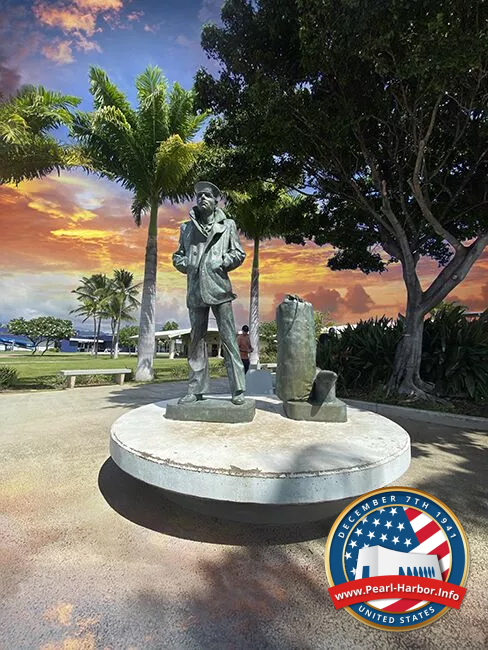
As you walk around the Pearl Harbor Visitor Center enjoy the fresh air and bright sun. Pearl Harbor is a little unusual in that even when it is very busy, and filled with people from all over the world, there are places there that are peaceful. Located behind the ticket counter is a statue of a sailor with his sea bag. The statue known as “the Lone Sailor” is a tribute to all personnel in the sea services past, present, and future. This statue was sculpted by Stanley Bleifeld using a real sailor, PO1 Dan Maloney as the model. A regular sailor in the Navy was chosen over professional models because the statue was meant to be a representative of ordinary sailors everywhere and as such was not meant to appear heroic. The initials and last name on the sea bag belong to Rear Admiral William Thompson, the first president of the Navy Memorial Foundation. The foundation raised funds for the creation of the Navy Memorial in Washington, D.C. The bronze used for the original sculpture is said to have had several historical artifacts added to it during the smelting process. The original was dedicated in 1987 and is located at the U.S. Navy Memorial in Washington, D.C. “The Lone Sailor” represents all sailors who have served, are serving, and who will serve. The statue honors their service in both times of war and peace, both at home and abroad. There are 17 copies of this statue throughout the United States, and one at Utah Beach in Normandy, France. The statue located at Pearl Harbor was dedicated in 2017 and has a piece of the USS Arizona Battleship added to its base. You can also look at him as either getting ready to leave for a lengthy sea voyage or one who has just returned from the sea and is ready to head home. This statue is a great place to get a photo, and to sit and think about how many members of the US Navy, US Coast Guard, and the US Merchant Marine who may have passed through here. They came from everywhere in the US, if not the World. Or think about friends or family who went to sea. A grandfather who was in the Navy in WWII, an Uncle who was aboard a ship in Vietnam, a cousin serving in the Navy right now, or even a daughter who plans to join the Navy when she graduates high school. This statue was meant for them and all others like them who have served, are serving, or will serve in the sea services.
Elvis Presley
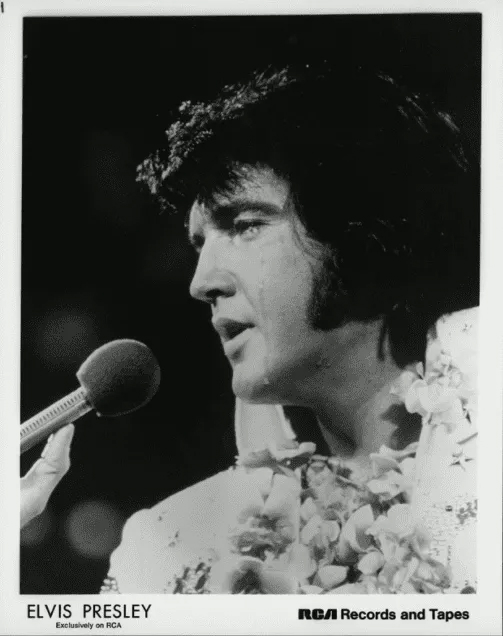
One person who is responsible for a large part of the funding for the Arizona Memorial is rock n roll legend Elvis Presley. While the building of the Arizona Memorial Monument had been approved in 1958, by 1960, less than half of the budgeted $500,000 had been reached. Col. Tom Parker, Elvis’s agent, was approached about raising funds for the USS Arizona Memorial. He thought it would be an excellent idea and would be great publicity for Elvis. This is especially true since Elvis had recently been discharged from the Army. This benefit concert would be his first since his discharge. The concert was to be held at the Bloch Arena at Pearl Harbor. On March 21, 1961, Elvis performed 15 of his greatest hit to a packed arena. The concert raised $54,000 for the Arizona Memorial. Elvis also made a private contribution. He went on to film “Blue Hawaii.” While the concert only raised a portion of the required funds for the Memorial, the publicity from the concert raised public awareness and support for the Arizona Memorial Monument, ensuring that funding goals would be reached in no time. Sadly, the concert was not broadcast as Col. Parker, and the television networks could not reach an agreement in time. Elvis returned to Hawaii and visited the USS Arizona Memorial Monument for the first time in 1965 and would visit each time he was in Hawaii.
Senator Daniel K. Inouye
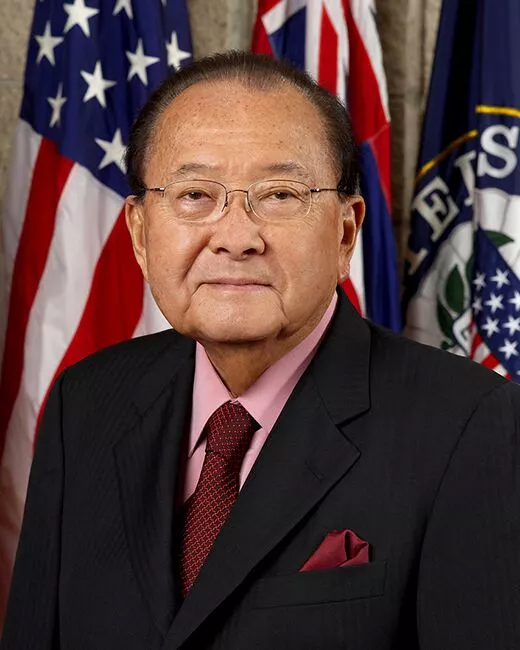
Senator Daniel Inouye was a US Senator from Hawaii. At one time, he was the senior-most member of the Senate.Daniel Inouye was born on September 7, 1924. He grew up in Honolulu with dreams of being a doctor. He was a senior in High School in December of 1941 and was trained in first aid. In the aftermath of the Japanese attack, he was pressed to assist with treating civilians who had been wounded by stray shells coming from Pearl Harbor. Once the United States declared are on Japan, a young Daniel Inouye, freshly graduated from high school, attempted to enlist in the Army. Unfortunately, at that time, he was denied the ability to join due to his Japanese heritage. Unable to enlist, he began attending the University of Hawaii and was a premed student. It was around this time that a group of Americans of Japanese Ancestry who were dismissed from the ROTC program formed a group called the Varsity Victory Volunteers forming a labor battalion attached to the Hawaii Territorial Guard. This was the genesis of the 442nd Regimental Combat Team. The 442nd RCT was comprised almost entirely of Japanese-Americans led by caucasian officers. When word of the formation of this unit, many Japanese-Americans jumped at the chance to enlist. Among them was Daniel Inouye. The unit comprised mostly of men from Hawaii, but a sizable portion also came from the US Mainland. Most enlisted directly from the internment camps. After training at Camp Shelby in Mississippi, the unit was shipped off to Italy. In June of 1944, the 442nd met up with another group of Japanese-Americans who had been deployed to Italy earlier. This was the 100th Infantry Battalion which was added to the 442nd RCT. The unit was then sent to fight in the Vosges Mountains of France. This was where one of the unit’s most famous actions took place. This action was known as the battle for the “Lost Battalion.” When the 442nd had to find and rescue a battalion from the Texan 141st Regiment that had been cut off by the Germans, heavy losses were incurred by the 442nd. Daniel Inouye received a field promotion to Second Lieutenant for his actions in that battle. The 442nd was then sent back to Italy to aid in the assault on the Gothic Line. While assaulting a German strongpoint on April 21, 1945, Daniel Inouye was wounded several times. One of his injuries led to the amputation of his right arm. While he was recovering from the amputation, news came out that the war in Europe was over. He remained in Army until his rehabilitation was completed in 1947 when he was discharged at the rank of Captain. Making use of the G.I. Bill, he went to Univerity to study law with the thought of getting into politics. After attaining his law degree, he ran for and won a seat in the Territorial House of Representatives as a Democrat. In 1959, when Hawaii became a State, he won a seat in the US House of Representatives. In 1962 Daniel Inouye was Elected to the US Senate. A seat that he would hold for the rest of his life. As a Senator, he appropriated $150,000 to build the USS Arizona Memorial. In 2000, the Distinguished Service Cross he received in Italy for his actions in the battle that cost him his arm was upgraded to the Medal of Honor. Senator Daniel Inouye passed away in 2012 at the age of 88.
National Memorial Cemetery Of The Pacific
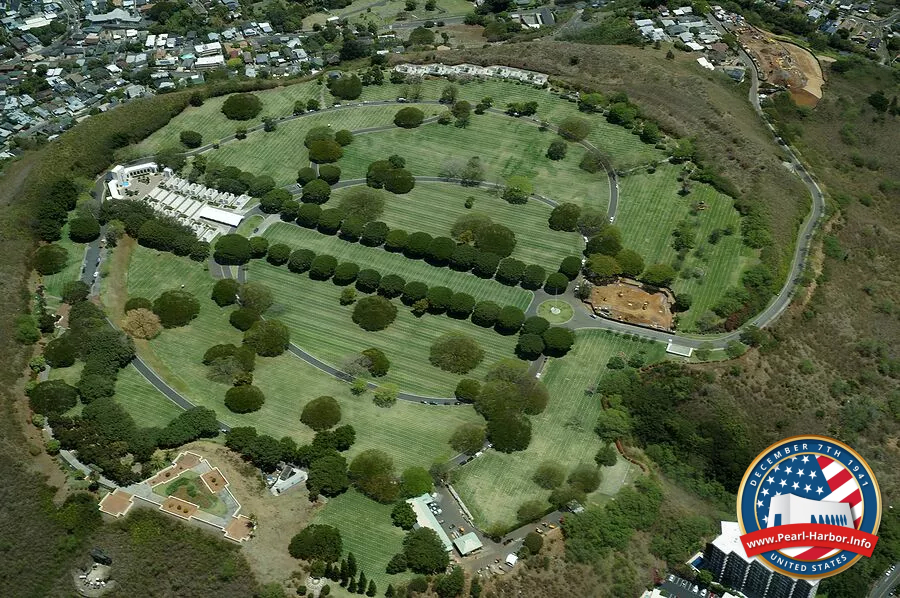
You may have been to Pearl Harbor and learned all about the attack on December 7. You have learned many new things that you had never known before. But there is another part of the story that you might now know. Rising out of Honolulu is an extinct volcano. Nestled within that volcano is the National Memorial Cemetery of the Pacific. Better known as Punchbowl Cemetery. Punchbowl Cemetery is one of the most visited tourist destinations in Hawaii. Sometimes called the “Arlington of the Pacific” after Arlington National Cemetery in Virginia. Punchbowl fills a similar function. Ever since it was established in 1949, the cemetery has been the final resting place for veterans, and their families. The cemetery holds the mortal remains of veterans who have served in America’s war from WWI to today. More than 61,000 graves are located in Punchbowl Cemetery and the cemetery is the resting place of many notable people. Hawaii’s first astronaut Ellison Onizuka who perished in the Challenger disaster is buried there. The late Senator Daniel Inouye, a WWII veteran, and Medal of Honor recipient also rests there along with 31 others who received the same honor. Other notable figures include Stanley Armour Dunham grandfather of President Barack Obama, a WWII veteran, and War correspondent Ernie Pyle, who lost his life covering the war in the Pacific. While there are many notable figures, perhaps the most poignant are the hundreds of graves marked as “unknown”. Their simple gravestones read only as “unknown”, sometimes with where they were found, such as USS Oklahoma, or Korea. These lonely and simple graves serve to bring home the tragedy of war. Fortunately, efforts have been made to identify these unknown remains so that their families can have closure. Advances in DNA reading technology have been able to reduce the number of unknowns, but there is still a lot to be done. One of the central features of the National Memorial Cemetery of the Pacific is the Honolulu Memorial, one of three American Battle Memorials. This memorial lists the names of soldiers and sailors who are missing in action from WWII, Korea, and Vietnam. The most famous feature of the Memorial is the large statue of Lady Columbia. Engraved below the statue is an excerpt from “Abraham Lincoln’s letter to Mrs. Bixby.” As mentioned earlier, Punchbowl is a popular tourist destination. This has to be balanced with the fact that it is an active cemetery and a hallowed resting place for many American heroes. Any tour vehicle that goes there is not allowed to stop or let people out. That is why all tours there are drive-through only. On Memorial day, there is a special ceremony at Punchbowl Cemetery. every grave receives a small American Flag. Each was planted by a volunteer and the road are lined with American flags as well. It is truly a sight to behold.
Kawaiaha`O Church
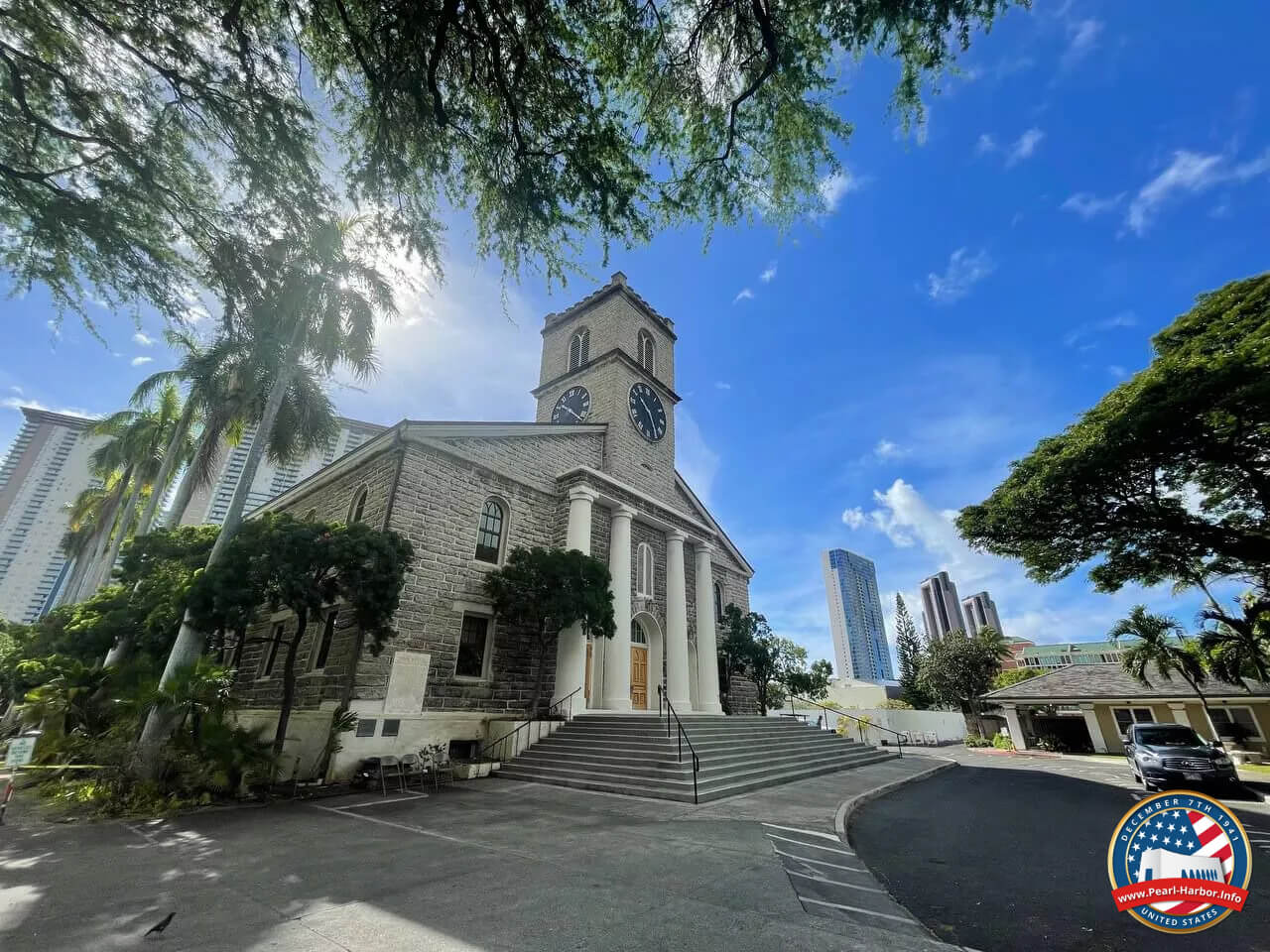
One thing about Hawaii that you may not know is that New England and Hawaii share a common past. The original religion in Hawaii was very strict. It had many gods and strictly regulated the lives of ancient Hawaiians. This was called the kapu system. Breaking many of those laws was punishable by death. Then one day, it vanished. After his death, King Kamehameha was succeeded by his son who would reign as Kamehameha II. His mother and favorite wife of Kamehameha the Great, was named Queen Kaahumanu. One day, in wanting to follow the fashion of the Europeans, she sat and ate with her son the King. Under the old system, this was strictly forbidden. However, who would punish the King’s mother? This small action and lack of punishment shook Hawaiian society overnight. Effectively, the ancient systems of beliefs and laws were gone. At about this time in 1820, on the other side of the world, a Protestant Mission was formed. Led by Hiram Bingham (his grandson would rediscover Machu Picchu), this Mission would leave New England bound for “Owyhee” to spread the word of God to the “heathens.” They arrived in Hawaii just in time. They were able to quickly replace the old belief with a new one, attempting to guide Hawaii to their protestant worldview. Convincing the now-baptized Christian Royalty to change old laws and enact new ones. While some laws were positive, others would lead to the near destruction of Native Hawaiian culture. In the heart of Honolulu sits a church. It is a grand church, perhaps not as large or grand as some of the cathedrals built later, but this one is the oldest on Oahu. Built in 1843, the Kawaiahao church as it would later be known was commissioned by Queen Kaahumanu and was constructed out of coral the church takes up around 9 acres in what is now downtown Honolulu. Generations of Hawaiian Royalty worshipped in this church. The Christian Missionaries made great efforts to translate the Bible into Hawaiian. In fact, they had to first put the Hawaiian language into writing. One interesting fact is that Hawaii actually enjoyed a high literacy rate. This allowed actual native Hawaiian historians like David Malo and Samuel Kamakau to be able to write about their own history in their own language. To this day, parts of the sermon are delivered in Hawaiian. The church is still active and is administered by the United Church of Christ. The church recently celebrated the bicentennial of the Hawaiian Mission which began in 1820.
King Kamehameha The Great
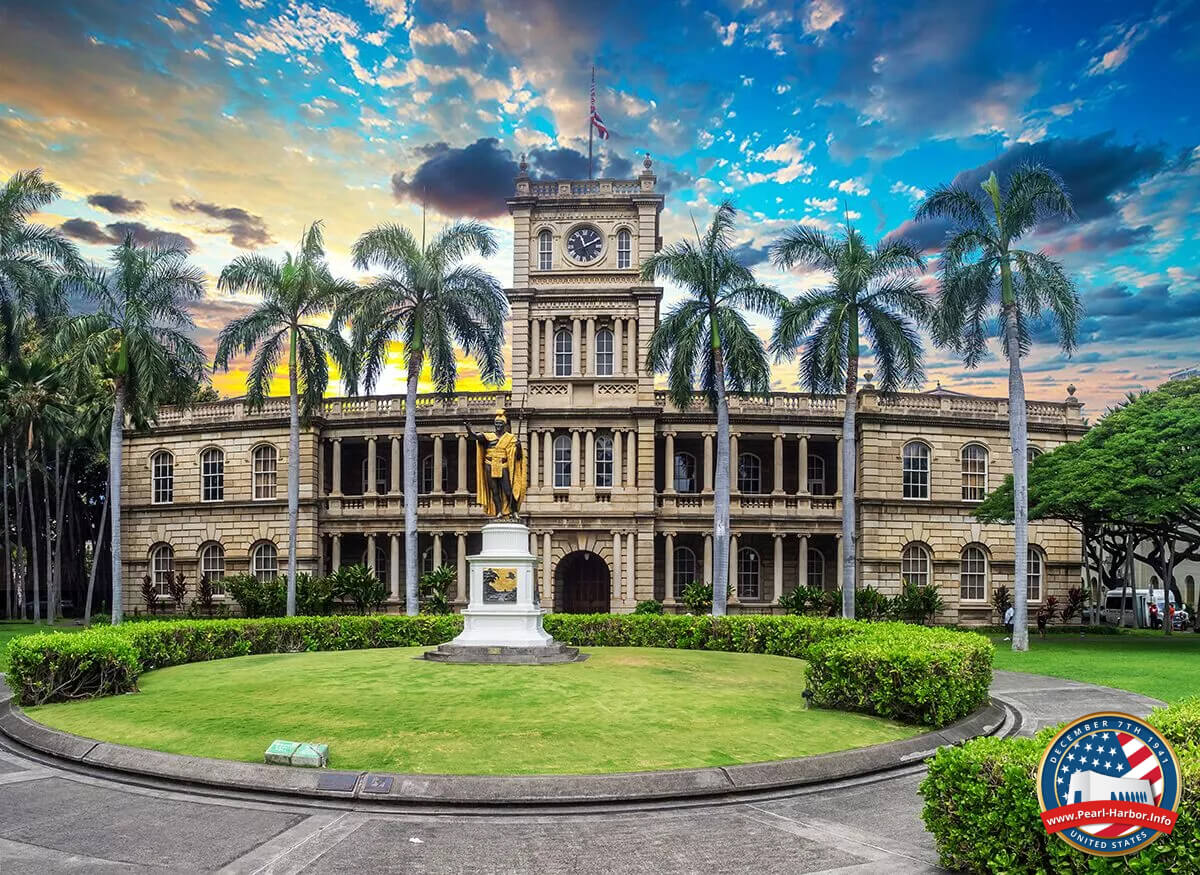
You might have heard of him, but how well do you know of his story? A King so extraordinary, the US Navy named a ballistic missile submarine after him. The man who would be King Kamehameha I was born in the late 1730s; the exact year is the subject of debate. The son of a minor chief on the Island of Hawaii, he would aspire to great things. When fully grown, he was known to be a massive man. With a height in excess of seven feet and weighing around 500 lbs., he was not a person you should trifle with. Kamehameha was originally not intended to be a chief of Hawaii Island. He lived with his uncle Kalaniopuu, who had a son who would be his heir. He was set supposed to be a priest to the Hawaiian god of war, Ku Kailimoku. During this time he would set out to fulfill a prophecy. When Kamehameha was a young teenager, of around 14 years of age he lifted a legendary stone called the Naha Stone. This stone was reported to weigh around 2.5 – 3.5 tons and was brought to the Island of Hawaii by King Kamehameha’s ancestors and there was a prophecy that whoever was able to lift the stone had a legitimate claim to rule as a descendent of the ruling clan. After many failed attempts, he finally lifted this stone thus fulfilling the prophecy and cementing his right to rule. This stone can still be seen in Hilo, Hawaii Island. With little actual fighting, he was supported to become the Alii of Hawaii Island. Around this time, after Captain Cook had brought news of Hawaii’s existence Europeans and Americans started coming to Hawaii more regularly. He made allies with some of them and began purchasing firearms. He set out on a march of conquest. One of his most famous battles was the battle of the Nuuanu Pali. He had cornered the last holdouts of the defenders of Oahu at the edge of the Nuuanu Pali which was basically a cliff off the side of a mountain. While both sides had guns, his army had better training and superior discipline. He routed the enemy army and ended up pushing them off the mountainside. Through various military campaigns, he would come to conquer every Hawaiian Island except Kauai. This Island would prove to be difficult to conquer and would later become part of the Kingdom through diplomacy. King Kamehameha valued European weapons which assisted him in his conquest of the Islands and had established trade primarily in sandalwood with Europeans who came to the Islands on their way to China. King Kamehameha had a rule that sandalwood was only to be traded for weapons and anyone caught breaking that rule would be out to death. He also strictly regulated the amount of sandalwood traded so as to have a reserve. In addition, he enacted a set of uniform laws and a uniform system of taxes throughout the Kingdom. King Kamehameha passed away in 1819. In line with ancient Hawaiian customs, his burial place is unknown.
Ellison Onizuka
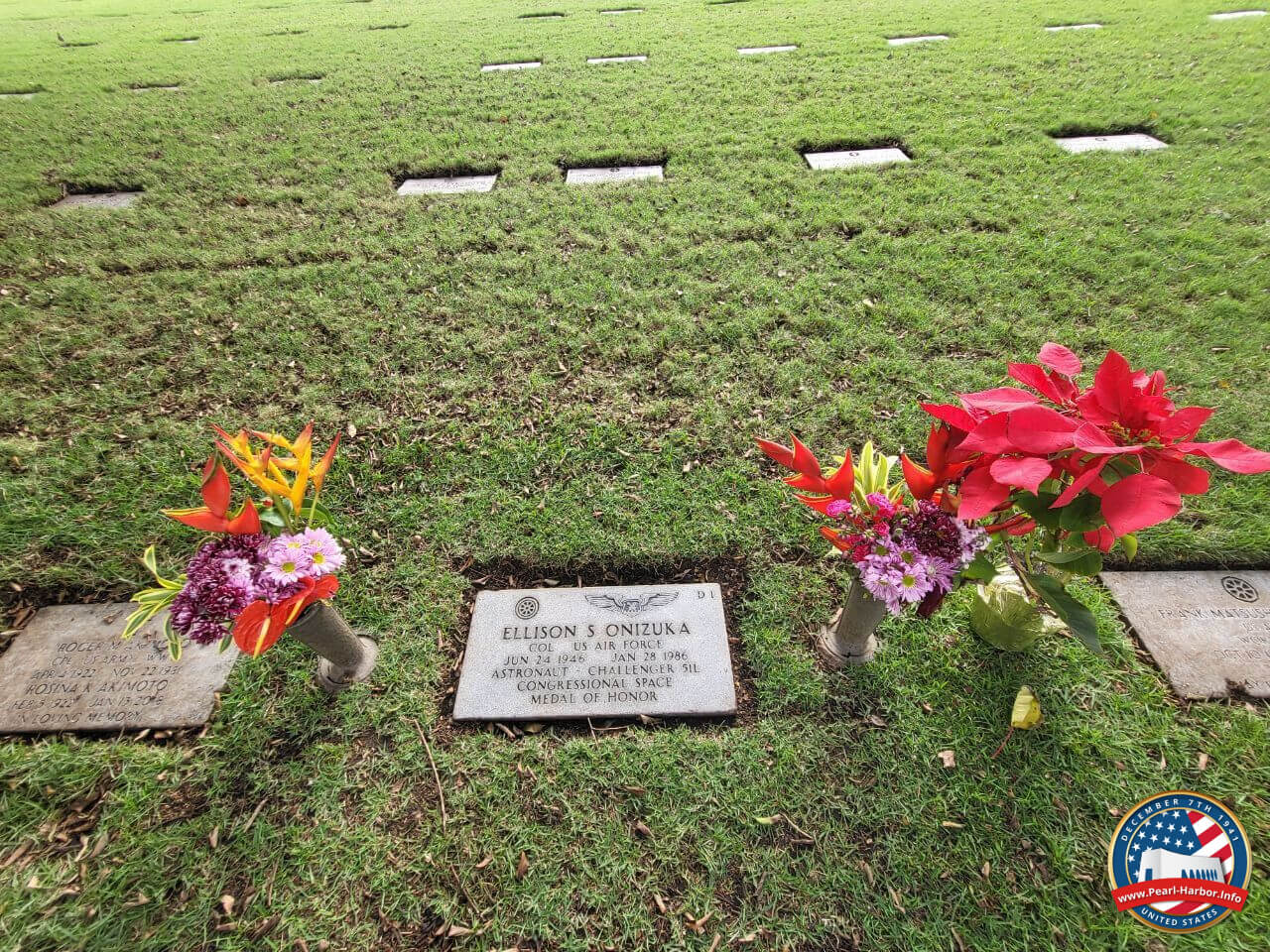
Many visitors to Hawaii will end up booking a Pearl Harbor Tour. If you do, one of the features of the tour is a drive through of the National Memorial Cemetery of the Pacific, also known as the Punchbowl Cemetery. This cemetery is a federal cemetery, much like Arlington National Cemetery in Virginia. The National Memorial Cemetery of the Pacific is also known as the Punchbowl Cemetery. The cemetery of the gravesite for many veterans from WWI to today. While the tour vehicle is not allowed to stop at the cemetery, it is an active cemetery, and out of respect for the people buried there and their families, tour vehicles of any kind are prohibited from stopping and letting people disembark. This is strictly enforced and can get tour companies banned from going there. The tour driver will usually give a brief narration of the cemetery and mention the names of some notable people buried there. One of the notable people buried at Punchbowl is Lieutenant Colonel Ellison Onizuka. Born in 1946 on the Big Island of Hawaii, Ellison Onizuka is notable as Hawaii’s first astronaut. As an officer in the US Air Force, he was selected for astronaut training in 1978. In 1985, Ellison Onizuka was assigned to his first space mission aboard the Space Shuttle Discovery. He spent about 74 hours in space on this mission. His second mission was STS 51-L aboard the Space Shuttle Challenger. On January 28, 1986, the Space Shuttle exploded 73 seconds after launch, killing all aboard, including Ellison Onizuka. For his sacrifice, he, along with the other members of the Challenger crew, were awarded the Congressional Space Medal of Honor, a civilian award given to astronauts who have distinguished themselves through meritorious efforts or contributions to the welfare of the US and all mankind. A total of 28 astronauts have been given this award since its inception. It has been awarded posthumously to 17 astronauts, the crews of the Apollo I, Space Shuttle Challenger, and Space Shuttle Columbia. The tour bus cannot stop in the cemetery. You may ask the driver to point out Ellison Onizuka’s grave. If you choose, the cemetery is open to the public, and you may go there on your own.
